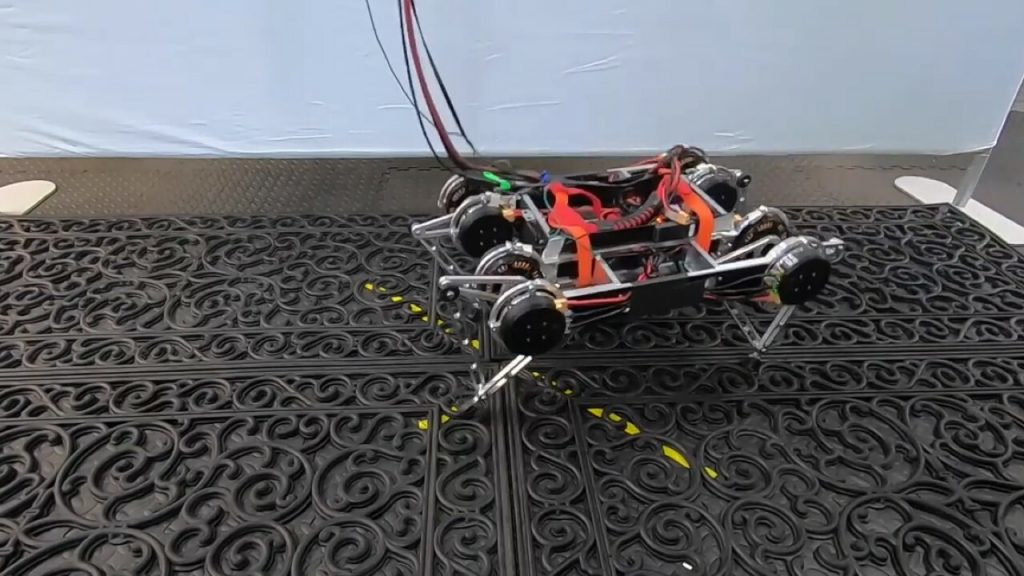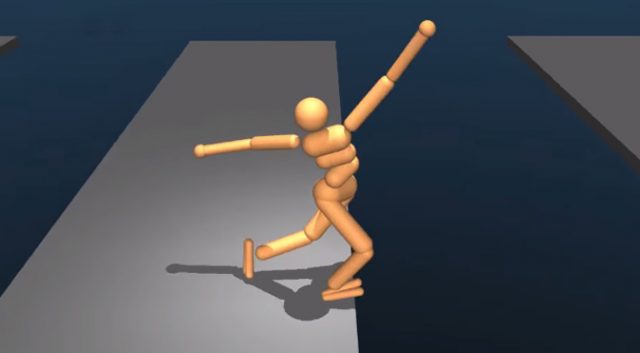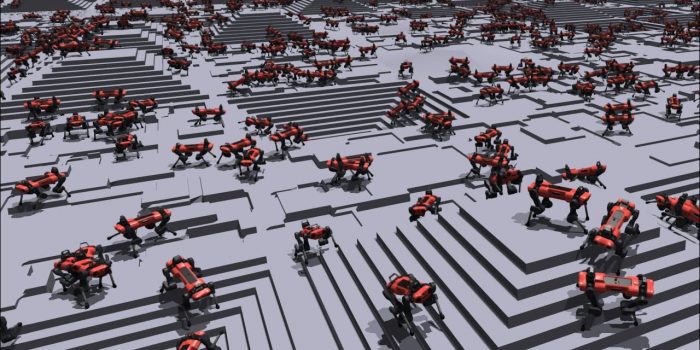Humans, beware! A robot army is in training and won’t be long till they take over the world
According to an initial report from Wired, a virtual army of 4,000 dog-like robots was used to train an algorithm to enhance the legwork of real-world robots (It’s basically like teaching babies how to walk, but this time, they’re robots and they’re not cute like babies)
The simulated army was developed by Switzerland-based ETH Zurich researchers and engineers at the chip manufacturing company, Nvidia. The two joined hands to create a simulation called ANYMals to overcome difficult obstacles like steps, slopes and sharp drops for robots by placing them into a virtual environment. Every time a robot solves a navigational problem, the algorithm comes up with an even harder task and keeps challenging the robot to its limits. Woah, talk about being stuck in a virtual prison *nervous laughter*

The sole purpose of the puzzle is to teach the robots how to overcome difficult scenarios and achieve a higher level of sophistication that’s never been seen before in AI mobility. During the tough training sessions, the robots mastered the up and downstairs walk like pros but the slopes were a bit of a challenge in the beginning. Only a few were able to slide down a slope but once the final algorithm was moved to a real-world version of ANYMal, the robot with sensors on its head and a detachable robot arm was successfully able to navigate around blocks and stairs albeit at slower speeds.

The researchers believe that lack of correspondence between the sensors that perceive the real and the virtual world is the main cause of the decreased speeds of the robots. As soon as they are able to work their way around it, it could lead to a fast-track learning curve for robots and other machines to learn a number of different skills such as sewing clothes, harvesting crops and even sorting out packages at an Amazon facility. “At a high level, very fast simulation is a really great thing to have,” said UC Berkeley Professor Pieter Abbeel, in the Wired report. It’s a matter of time before robots would be able to perform everyday tasks without any software and hardware coordination problems.


